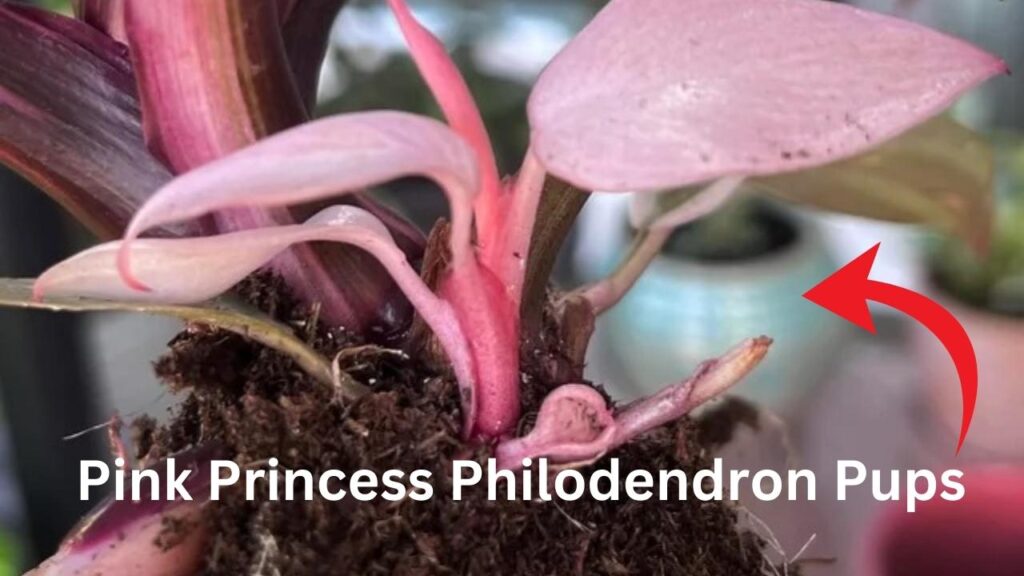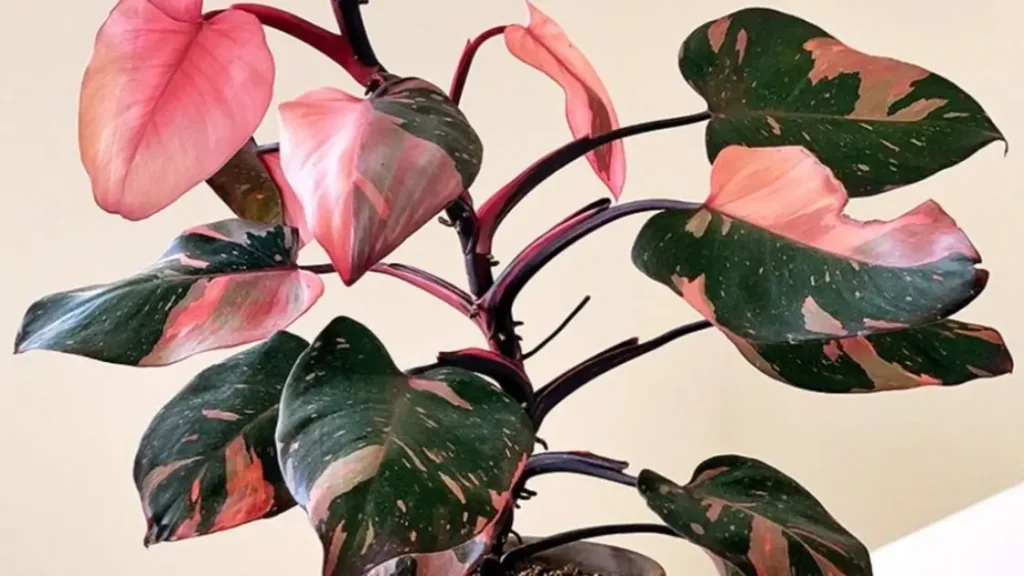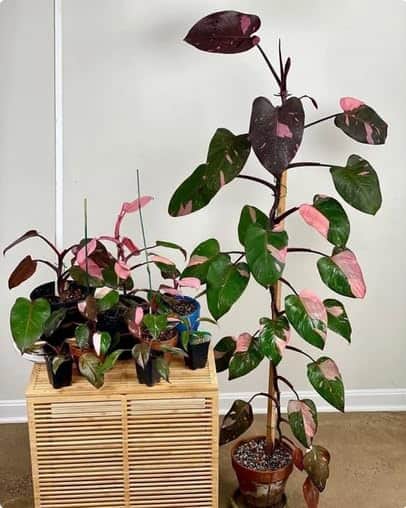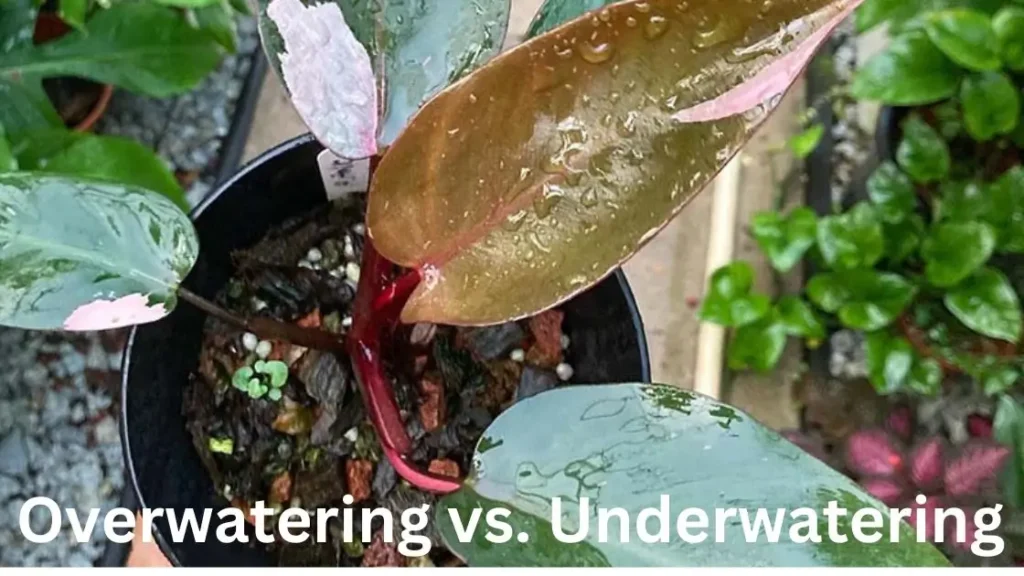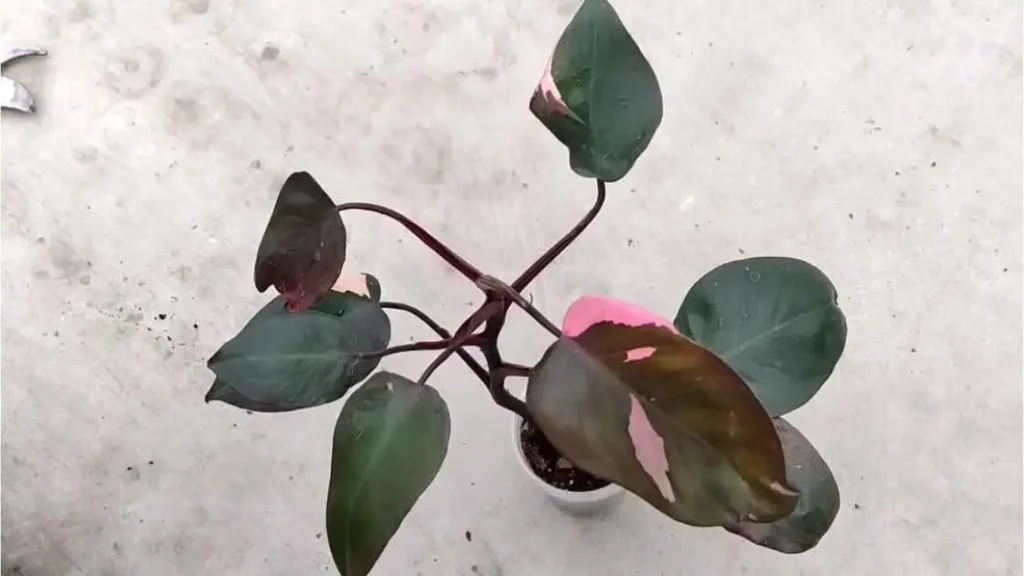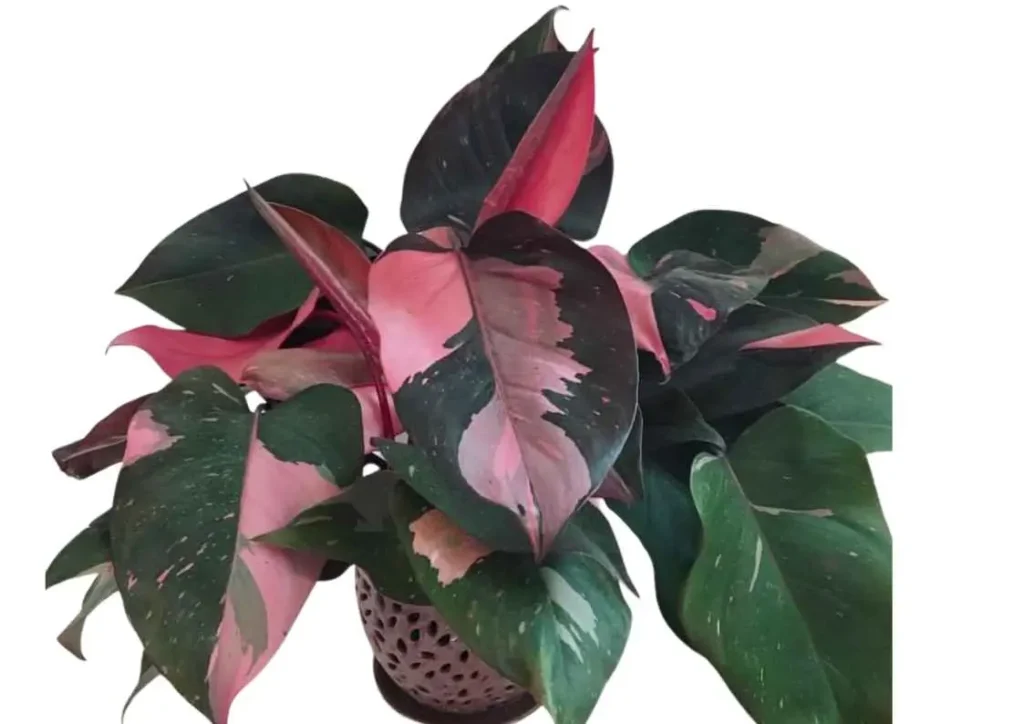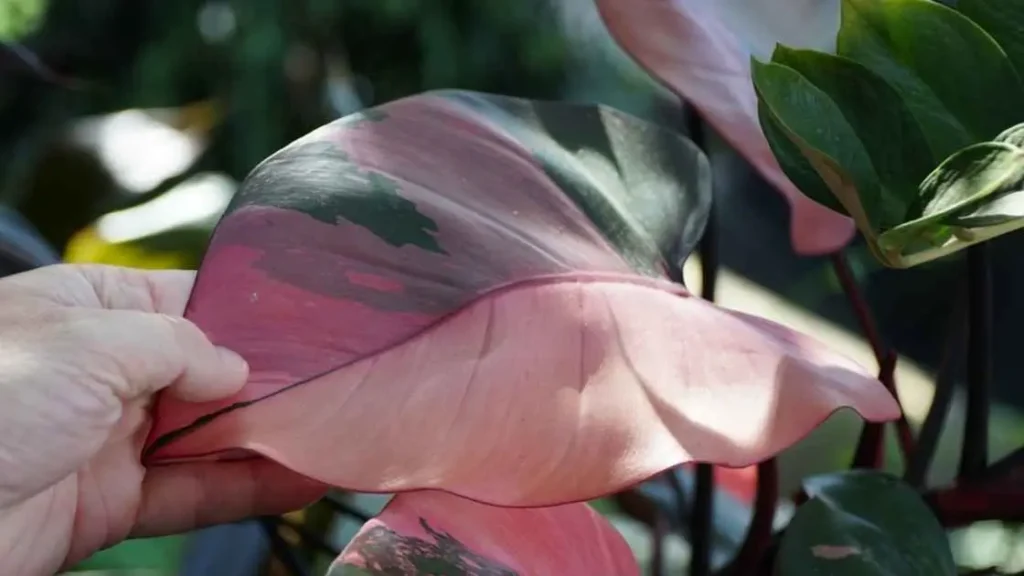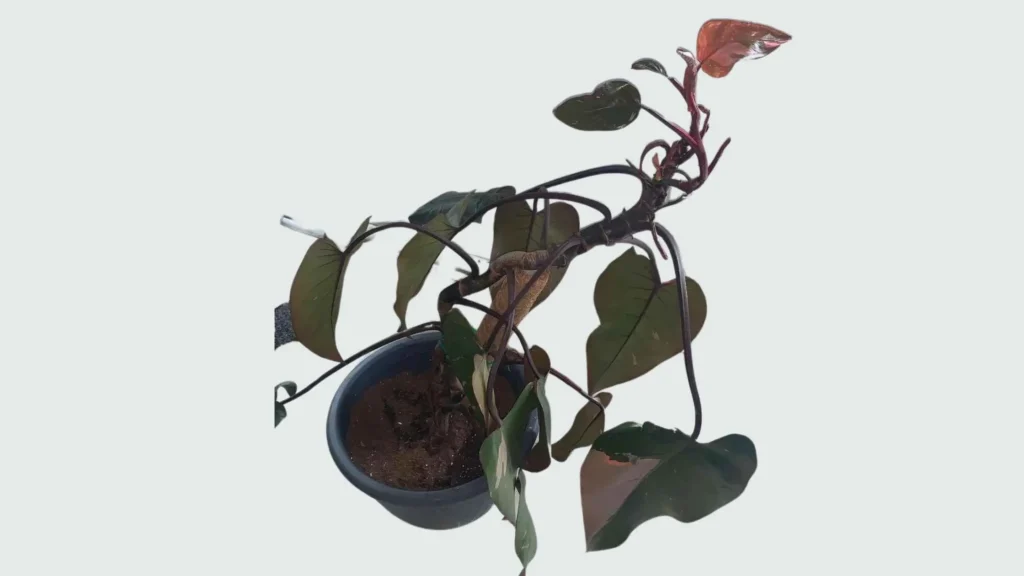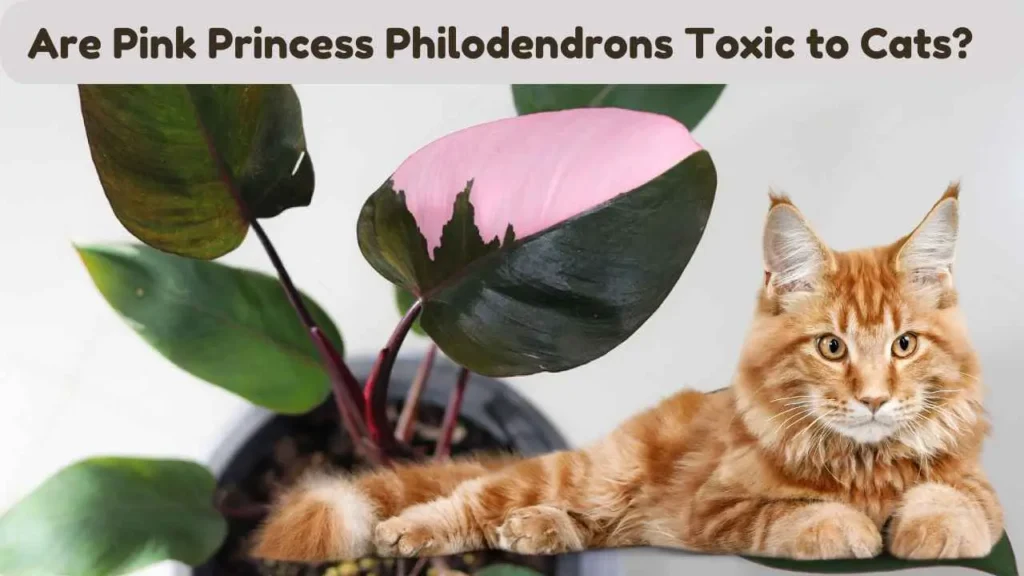Table of Contents
ToggleI remember when I first noticed something was wrong with my Pink Princess Philodendron. One day, it was vibrant and full, with its beautiful pink-and-green leaves making it the star of my houseplants. But the next day, some leaves started to turn yellow, and to my surprise, they began falling off one by one. It felt like I was losing a piece of my plant paradise each time a leaf dropped. If you’re feeling the same way, don’t worry—I’ve been there, and I’m here to help you through it.
Why Your Pink Princess Philodendron Might Be Losing Leaves—and How to Stop It
The Pink Princess Philodendron is a stunning houseplant that many of us love to show off in our homes. Its bright pink splashes against dark green leaves make it a favorite for indoor gardeners. But what do you do when those beautiful leaves start to drop? It can be frustrating, especially when you’ve been doing your best to care for your plant. The truth is, Pink Princess leaf drop can happen for several reasons. Understanding these causes is the first step to fixing the problem.
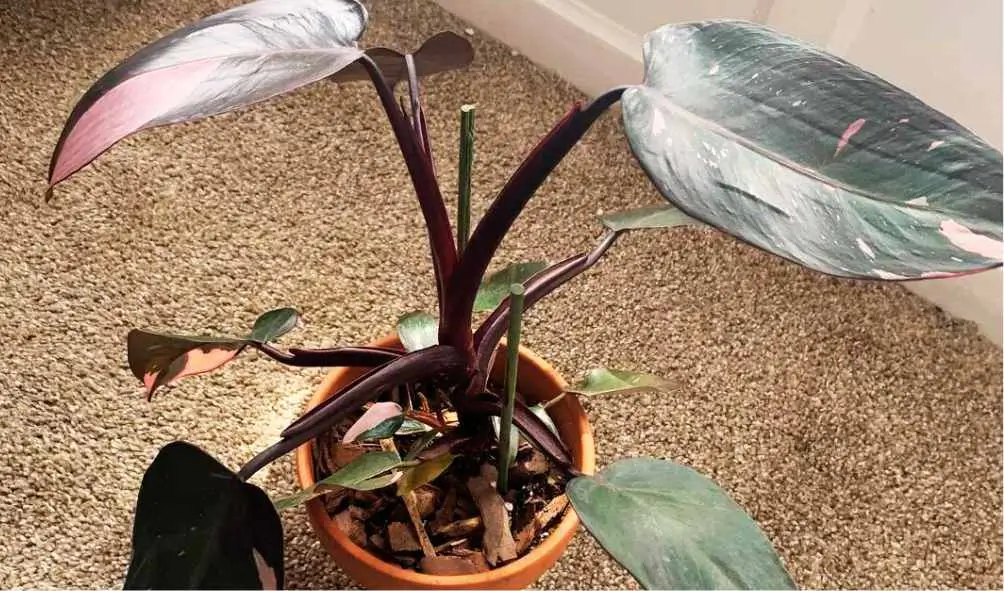
Let’s explore the possible reasons your Pink Princess might be losing leaves and how to address them. This guide will cover everything you need to know, from overwatering to pest control, so you can help your plant thrive again.
Common Causes of Pink Princess Leaf Drop
Overwatering and Root Rot
If you’re like me, you probably started your plant care journey with the best intentions. But sometimes, too much care can actually harm your plant. Overwatering is one of the most common mistakes and a big reason why Pink Princess leaves start to drop.
When I first got my Pink Princess, I was so eager to help it grow that I watered it too often. The soil was always damp, which I thought was good. But I was slowly suffocating the roots. Root rot set in, and the leaves started to turn yellow and fall. My once healthy plant was struggling.
How to Recognize Overwatering and Root Rot:
- Yellow leaves that eventually fall off.
- Mushy or black roots when you check the soil.
- A bad smell coming from the soil.
Solution: If you think you’ve overwatered, start by checking the roots. Gently take the plant out of its pot and look at the roots. If they are black or mushy, it’s root rot. Cut away the bad roots with clean scissors, then repot the plant in fresh, well-draining soil. Reduce how often you water. Let the top 1-2 inches of soil dry out before watering again, and make sure the pot drains well.
Underwatering
On the other hand, underwatering can also cause pink princess leaf drop. Although it’s less common, it’s still a problem, especially if you’ve been careful about not overwatering and ended up going too far in the opposite direction.
When I tried to fix my overwatering habits, I became too cautious and started underwatering my Pink Princess. The soil would become completely dry, and the leaves began to droop and fall. It was a clear sign that my plant wasn’t getting enough water.
Signs of Underwatering:
- Dry, crispy leaves that fall off easily.
- Soil that pulls away from the sides of the pot.
- The plant looks generally wilted.
Solution: If your plant is underwatered, start by gradually increasing the water. Don’t soak the plant all at once if it’s been dry for a long time. Instead, water it lightly and often until the soil holds moisture. The goal is to keep the soil consistently moist, not too wet or too dry.
Improper Lighting
Lighting is key to keeping your Pink Princess Philodendron healthy. Too much or too little light can stress the plant and cause leaf drop. The challenge is finding the right balance where your plant gets just the right amount of light.
When I first placed my Pink Princess in a bright, south-facing window, I thought it would thrive. But soon, I noticed brown spots on the leaves, and they started falling off. The plant was getting too much direct sunlight, which was burning the leaves. Moving it to a darker corner wasn’t the answer either. The leaves turned yellow and dropped because it wasn’t getting enough light.
Optimal Lighting Conditions:
- Bright, indirect light is best.
- Avoid direct sunlight, especially during the hottest parts of the day.
- Use a sheer curtain to diffuse light if the plant is near a bright window.
Solution: If your plant is getting too much light, move it to a spot where it gets bright but indirect light. If it’s not getting enough light, move it closer to a window or use grow lights to help.
Temperature Stress
The Pink Princess Philodendron is a tropical plant that grows best in warm, stable temperatures. Sudden changes in temperature or exposure to cold drafts can cause leaf drop. I learned this the hard way when I placed my Pink Princess near an air conditioning vent in the summer. The cold air made the leaves turn yellow and fall off quickly.
Ideal Temperature Range:
- 65-75°F (18-24°C) is perfect for most Philodendrons.
- Keep the plant away from drafty windows, air conditioning vents, or heaters.
Solution: Keep your Pink Princess in a spot with stable temperatures within the ideal range. During colder months, protect it from cold drafts and keep it away from heat sources.
Humidity Issues
The Pink Princess Philodendron loves humidity because it’s a tropical plant. Low humidity, especially in winter, can cause leaf drop. I noticed this when the air in my apartment got dry in winter, and my Pink Princess started losing leaves.
Maintaining Proper Humidity Levels:
- Aim for 40-50% humidity.
- Use a humidifier or place the plant on a humidity tray.
- Grouping plants together can also help increase humidity.
Solution: If you live in a dry climate or your home gets dry in winter, try using a humidifier in the room where your Pink Princess is. You can also place the plant on a tray filled with pebbles and water. Just make sure the pot sits above the water to avoid soggy roots.
Pests and Diseases Leading to Pink Princess Leaf Drop
Common Pests (e.g., Spider Mites, Mealybugs)
Pests can also cause pink princess leaf drop. Tiny insects like spider mites and mealybugs can damage your plant if you don’t act quickly. I remember finding small, white, cotton-like clusters on my Pink Princess. They turned out to be mealybugs. These pests were draining the plant’s energy, making the leaves weak and causing them to fall off.
Identifying Pests:
- Spider Mites: Look for tiny webs on the underside of leaves.
- Mealybugs: White, cottony clusters on the leaves and stems.
- Aphids: Small green or black bugs that gather on new growth.
Solution: If you see any pests, isolate the affected plant to stop the spread. Treat the plant with insecticidal soap or neem oil. Make sure to cover all surfaces, especially the undersides of the leaves. For severe infestations, you may need to repeat the treatment every few days until the pests are gone.
Fungal and Bacterial Infections
Besides pests, your Pink Princess Philodendron can also suffer from fungal and bacterial infections, which can cause leaf drop. These infections often thrive in places with high humidity and poor air circulation.
Signs of Infections:
- Brown or black spots on the leaves.
- A bad smell from the soil.
- Leaves yellowing and dropping quickly.
Solution: If you think your plant has a fungal or bacterial infection, remove the affected leaves right away. Improve air circulation around the plant. You can also treat it with a fungicide, but prevention is important. Avoid overwatering, and try not to get the leaves wet when you water the plant.
Nutrient Deficiencies
Sometimes, when your Pink Princess isn’t getting enough nutrients, its leaves might drop. I noticed this when the new leaves on my plant were small and pale, while the older ones turned yellow and fell off.
Common Nutrient Problems:
- Nitrogen Deficiency: Causes older leaves to turn yellow and slows growth.
- Magnesium Deficiency: Leads to yellowing between the veins of the leaves.
- Iron Deficiency: Causes new leaves to yellow while the veins stay green.
Solution: Feed your Pink Princess with a balanced liquid fertilizer during the growing season (spring and summer). Be careful not to over-fertilize, as this can cause salts to build up in the soil, which can also make leaves drop. If you think there’s a specific deficiency, try using a fertilizer that targets that nutrient.
How to Prevent Pink Princess Leaf Drop?
Proper Watering Techniques
Watering your Pink Princess can be tricky, but it’s important to get it right to avoid leaf drop. It’s not just about how much water you give; it’s also about how you give it. Many people make the mistake of following a strict watering schedule instead of checking if the soil is actually dry.
Here’s what I do now: I test the top 1-2 inches of soil with my finger before watering. If it feels dry, I water the plant thoroughly until extra water drains out of the bottom of the pot. This way, the roots get enough water without sitting in soggy soil, which can cause root rot.
During the growing season, your Pink Princess might need more water, especially if it’s in a warm, sunny spot. But in winter, the plant grows slower, so you should water less. Let the soil dry out more between waterings to prevent overwatering.
Optimizing Light and Temperature
Getting the right balance of light and temperature is key to keeping your Pink Princess Philodendron healthy. Too much direct sunlight can burn the leaves, causing them to drop. On the other hand, too little light can make the plant weak and lead to leaf loss.
Here’s what I do: I place my Pink Princess near a bright, east-facing window. This spot gives it plenty of indirect light throughout the day without the strong afternoon sun. If you don’t have a spot like this, you can use a sheer curtain to soften the light or try using grow lights to add extra light.
Temperature is also important. Pink Princess Philodendrons do best in warm and stable conditions. Keep the plant away from places where temperatures change a lot, like near drafty windows or heating vents. Try to keep the temperature between 65-75°F (18-24°C) for the best growth.
Maintaining Ideal Humidity Levels
Humidity is often ignored, but it’s important to stop your Pink Princess from losing leaves. I live in a place where indoor air gets very dry, especially in winter, so I had to find ways to keep the humidity right for my plant.
One easy trick: Group your houseplants together. When plants are close, they create a mini environment with more humidity, like their natural habitat. I also use a pebble tray under my Pink Princess. Fill a shallow tray with pebbles, add water until it’s just below the top of the pebbles, and place the pot on top. As the water evaporates, it boosts the humidity around the plant.
If you want to go further, a room humidifier can help a lot. I run mine during the day when the air is driest, especially in winter. Aim for humidity levels around 40-50% for the best results.
Regular Monitoring and Maintenance
Preventing leaf drop in your Pink Princess isn’t just about fixing problems—it’s about staying ahead of them. Regularly checking your plant for stress can help you catch issues early.
I inspect my Pink Princess every week. I look for signs of overwatering, underwatering, pests, or diseases. If I see something wrong, I act fast. For example, if I notice yellow leaves, I check the soil’s moisture. If I spot brown spots, I adjust the lighting.
Pruning is also part of my routine. Removing dead or damaged leaves keeps the plant looking good and stops problems from spreading. Don’t forget to repot the plant every 1-2 years or when it becomes root-bound. Repotting into fresh, well-draining soil gives the roots more space to grow and helps prevent root rot.
Conclusion and Final Tips
Dealing with Pink Princess leaf drop can be frustrating, but with the right care, you can fix it. Understanding the common causes—too much or too little water, improper lighting, temperature stress, and low humidity—helps you take steps to keep your Pink Princess healthy.
Remember, balance is key to preventing leaf drop. Pay attention to your plant’s needs and adjust your care routine as needed. Whether it’s changing how you water, finding the right light, or boosting humidity, small changes can make a big difference.
Most importantly, don’t get discouraged. Every plant parent has a learning curve. The more you observe and understand your Pink Princess, the better you’ll get at meeting its needs. Keep experimenting, stay patient, and soon, you’ll have a thriving Pink Princess Philodendron that will impress all your plant-loving friends.
Related
Discover more from Pink Philodendron
Subscribe to get the latest posts sent to your email.


